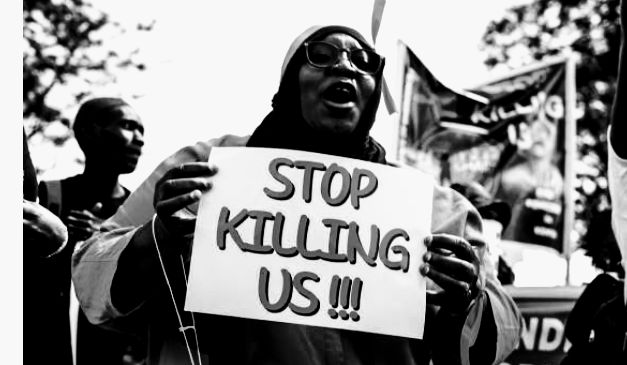Femicide, the gender-based killing of women and girls, is a grave violation of human rights, deeply rooted in patriarchal beliefs, gender inequality, and systemic discrimination. Its scale is daunting: every year, tens of thousands of women globally are murdered simply because they are women. To effectively address and end femicide, society needs a multi-faceted approach combining legal reform, cultural change, education, and support services. This article outlines the causes of femicide, current efforts to end it, and the actions needed to bring about a safer world for women.

The Causes and Scope of Femicide.
Femicide manifests differently across regions, but certain factors are common globally. Cultural norms and entrenched gender biases foster environments where violence against women becomes normalized. In many places, historical attitudes about women as property or “lesser” contribute to a tolerance of domestic violence, honor killings, and dowry-related murders. Additionally, women often face discrimination when they seek help from authorities or try to leave abusive situations, making them more vulnerable to violence.
The United Nations estimates that, globally, over 50,000 women are killed each year by intimate partners or family members. However, these numbers may under represent the reality due to insufficient reporting, inconsistent definitions, and lack of data collection in certain regions. Femicide disproportionately affects marginalized women, particularly those from indigenous, poor, or LGBTQ+ backgrounds, further highlighting systemic issues that exacerbate violence.

Current Efforts to Combat Femicide.
Various international and national organizations have made strides in addressing femicide through advocacy, legal reform, and grassroots programs. Here are some key approaches:
1. Legislative Action
Countries worldwide are strengthening laws around femicide and other forms of gender-based violence. Many Latin American countries, for instance, have introduced femicide-specific laws with harsher punishments for perpetrators. The purpose of these laws is not only to penalize offenders but also to recognize the unique gendered motivations behind these crimes.
2. Education and Awareness
Educating communities on gender equality, respect, and non-violence is a critical preventive measure. Awareness campaigns about women’s rights help reduce harmful stereotypes and change social attitudes that justify or tolerate violence against women. Programs targeting boys and men have been particularly impactful, as they address toxic masculinity and promote healthier relationships.
3.Support Services for Survivors
Access to resources like shelters, mental health services, and legal support enables women to leave abusive situations safely. Organizations like UN Women and Amnesty International also provide direct support and advocate for policies to improve the lives of women at risk of violence. Having accessible support systems can prevent situations that might escalate into femicide.
4. Data Collection and Research
Improved data collection helps quantify the scope of femicide and analyze patterns, such as common risk factors. Organizations like the United Nations and the World Health Organization (WHO) are working with local governments to improve data tracking to better inform policy decisions.

Barriers to Ending Femicide
Despite these efforts, several barriers still hamper progress.
Lack of enforcement of laws is a significant issue. Even in countries with strict laws against femicide, enforcement can be weak or inconsistent. Corruption, judicial bias, and insufficient training on gender issues can hinder justice for victims.
Moreover, societal attitudes around traditional gender roles remain deeply embedded, making it difficult to achieve widespread cultural shifts.In addition, underreporting and lack of legal support for victims make it challenging to hold perpetrators accountable. Many victims may fear retaliation or shame, which deters them from reporting abuse or seeking help. Economic dependency on abusers can also prevent women from leaving dangerous situations.
Strategies for a Future Free from Femicide .
Ending femicide will require an integrated, cross-sector approach involving governments, civil society, education, and communities. Here are some key strategies that could make a lasting impact:
1. Gender-Sensitive Legal Reforms
Countries must continue reforming legal systems to address gender-based violence adequately. Specialized training for law enforcement and the judiciary on handling gender-based violence cases with sensitivity and rigor is essential.
2. Community-Led Change.
Community leaders, educators, and activists play a crucial role in shifting cultural attitudes toward gender and violence. Programs that empower local leaders to promote gender equality, especially within patriarchal communities, can address the root causes of violence and shift social norms over time.
3. Economic Empowerment of Women
Financial dependency is one of the main reasons women remain in abusive relationships. Providing women with access to education, job opportunities, and economic resources can empower them to escape dangerous situations, thereby reducing the risk of femicide.
4. Targeted Education for Boys and Men
Educating boys from a young age about respectful relationships, consent, and the value of equality has proven to be a strong deterrent against future violence. Engaging men in these conversations helps challenge harmful gender norms and build a culture of mutual respect.
5. Global Collaboration
Collaboration between countries and international organizations is vital to standardizing data collection and response measures. Sharing best practices, as well as financial and technical support, can help countries with limited resources address the issue effectively.

Conclusion.
Ending femicide is not an impossible goal, but it requires sustained commitment and coordinated action from all parts of society. Countries and communities that have invested in gender equality, comprehensive support systems, and public awareness initiatives have already shown significant progress in reducing femicide rates. By building on these examples, societies can create a world where women are free from fear, and their rights to life, dignity, and security are protected.As awareness grows and support systems are strengthened, it is essential that governments, organizations, and communities remain dedicated to ending femicide. Women’s lives depend on it, and their safety is not only a matter of human rights but also a foundation for social harmony, economic stability, and global well-being.




